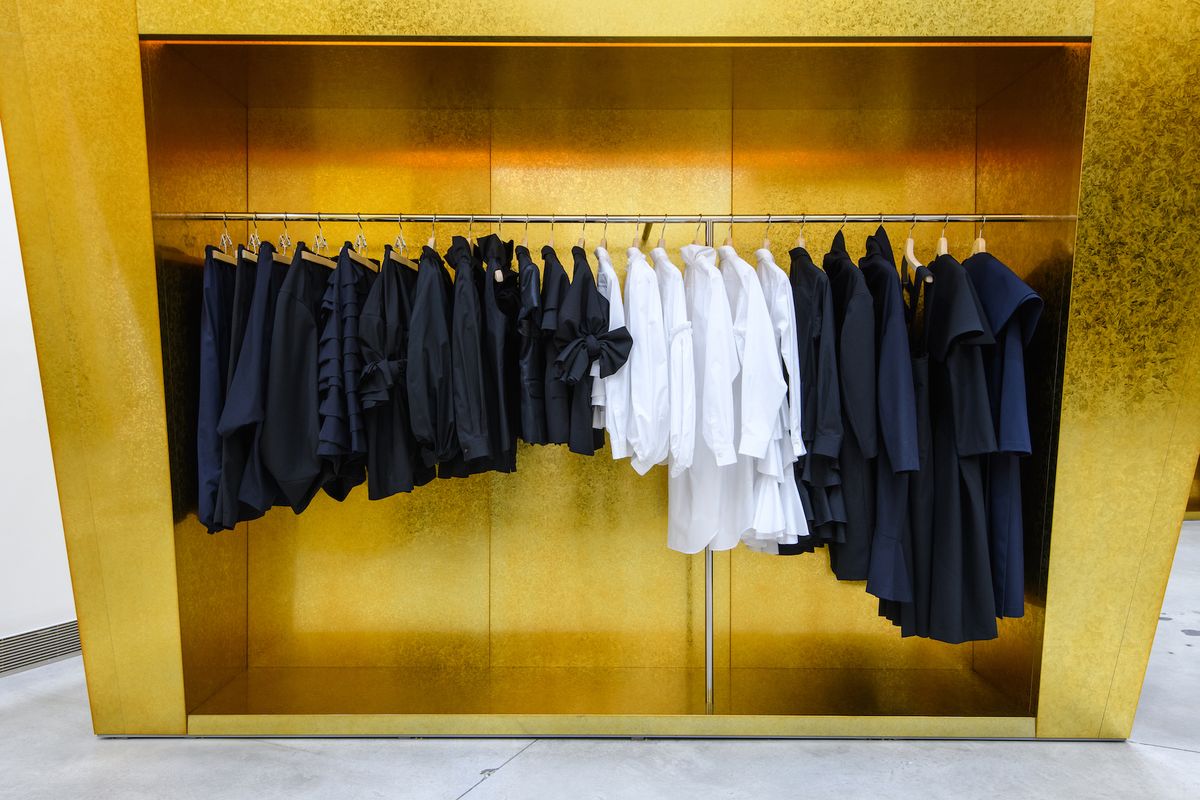The Increase of Online Buying: Searching For Boutique Fashion at Your Fingertips
The Increase of Online Buying: Searching For Boutique Fashion at Your Fingertips
Blog Article
Lasting Fashion: Just How Eco-Friendly Clothing Is Forming the Future of Design
As the garment industry encounters boosting analysis over its environmental effect, the surge of lasting style supplies a promising alternative that lines up style with ecological responsibility. Using innovative materials such as plant-based textiles and recycled fibers, together with advanced techniques like digital and 3D printing, designers are redefining what it suggests to be stylish in the modern-day age. Concurrently, the expanding popularity of upcycling and second hand society is cultivating a shift towards a round economic climate. How does this motion genuinely influence the future trajectory of fashion, and what difficulties exist in advance in its prevalent adoption?
Ingenious Sustainable Products
As the style industry grapples with its ecological effect, innovative sustainable products have emerged as a critical remedy for decreasing eco-friendly footprints. These materials not only minimize dependence on fossil fuels but additionally reduce hazardous chemical usage and water intake.
In addition to plant-based products, advancements in biofabrication have actually caused the development of lab-grown textiles. Mycelium leather, originated from mushroom origins, offers a functional and eco-friendly option to animal leather. Its production results in substantially lower carbon emissions and water usage, making it a much more sustainable choice for style designers seeking to straighten with eco-friendly methods.
Recycled products are also acquiring grip, with polyester made from recycled plastic containers standing for a significant advancement. This advancement not only diverts plastic waste from seas and landfills yet also decreases energy intake contrasted to producing virgin polyester. Together, these products emphasize the capacity for a much more lasting garment industry, paving the way for eco aware design and production.
Eco-Conscious Production
Building on the advancements in sustainable materials, the fashion sector is likewise re-evaluating its production procedures to even more decrease ecological impact. Trick approaches consist of decreasing water intake, decreasing carbon emissions, and removing hazardous chemicals.
One more essential facet is the reduction of poisonous chemicals typically used in coloring and finishing textiles. Eco-conscious producers are shifting towards plant-based dyes and waterless dyeing modern technologies, which not just secure local ecosystems yet likewise enhance employee safety and security. Advancements like electronic printing lower fabric waste and power intake, supplying a cleaner choice to traditional approaches.
Moreover, openness and traceability have actually become extremely important. With the improvement of blockchain modern technology, business can now provide comprehensive insights into their supply chains, guaranteeing ethical and eco-friendly methods at each step. This transparency builds consumer count on and encourages brand names to maintain high sustainability requirements. As the demand for eco-conscious items expands, suppliers are urged to innovate, making certain that the future of style is both sustainable and fashionable.
The Rise of Upcycling
Upcycling, a transformative practice in sustainable fashion, involves creatively repurposing disposed of materials right into brand-new, top notch products. This cutting-edge method not only reduces waste but additionally lessens the need for basic materials, therefore minimizing the ecological influence of garments production. By reimagining and reconstructing existing products, developers and style brand names have the ability to infuse creativity right into their collections while promoting environmental responsibility.

Additionally, the upcycling motion has empowered independent designers and small organizations, who commonly lead in development because of their dexterity and creativity. By profiting from the plentiful accessibility of extra products, these entities add to a round economic situation, demonstrating that fashion can be both elegant and sustainable. With upcycling, the market takes substantial informative post strides in the direction of a much more accountable and mindful future.
Thrift Culture's Effect
The expanding second hand culture considerably reshapes the landscape of sustainable fashion, stressing the importance of mindful consumption. This social shift urges customers to accept used garments, therefore decreasing the demand for brand-new garment manufacturing and lessening environmental effect. Thrift purchasing not only prolongs the lifecycle of clothes yet additionally lowers the carbon footprint associated with production, transporting, and disposing of clothing.
A vital aspect of second hand society is its democratization of fashion. By using a vast selection of designs from various periods at economical prices, thrift shops make fashion accessible to a wider target market. This accessibility promotes a sense of uniqueness and imagination, as consumers mix and match distinct items to curate individualized closets without adding to the quick fashion cycle.
Furthermore, thrift society promotes circularity in style, aligning with the principles of a circular economy. As even more consumers and designers welcome second hand society, the style industry is forced to adapt, incorporating sustainable methods to fulfill the expanding demand for eco-conscious options.

Future Trends in vogue
Fashion's evolution is progressively formed by sustainability-driven campaigns and technical developments. One prominent pattern is the rise of electronic fashion, where online garments can be worn in enhanced truth settings, considerably lowering material waste.
In addition, the assimilation of blockchain innovation uses brand-new opportunities in openness and traceability, allowing customers to confirm the sustainability credentials of their garments. boutique fashion. This ensures responsibility in supply chains and advertises honest sourcing practices. 3D printing is yet an additional technology that assures to change making procedures by making it possible for on-demand production, consequently lowering excess inventory and waste
Additionally, the advancement of bio-fabricated products, such as lab-grown leather and plant-based fabrics, offers sustainable choices to typical materials. These developments lower dependence on pet products and resource-intensive plants. As these innovations mature, they are positioned to transform the style landscape, combining style with sustainability. The future of style, for that reason, depends on a smooth mix of modern technology, development, and ecological obligation.
Conclusion
The transformation of the style sector with lasting techniques shows a More Info pivotal shift towards environmental accountability. The integration of innovative materials, eco-conscious production techniques, and the embracement of upcycling and thrift society underscores a dedication to reducing ecological impacts. As these techniques get momentum, they redefine the market's story by prioritizing lasting and moral selections. This development not just aligns style with ecological sustainability however likewise establishes a criterion for future fads concentrated on obligation and technology.
As the style market faces enhancing examination over its ecological effect, the increase of sustainable style supplies a promising alternative that lines up style with ecological responsibility.As the fashion sector grapples with its ecological effect, innovative lasting materials have emerged as an important service for reducing environmental impacts. Together, these products underscore the possibility for a more lasting style industry, leading the means for eco conscious style and production.
Building on the technologies in lasting products, the fashion market is likewise re-evaluating its manufacturing procedures to further minimize ecological influence. boutique fashion.Upcycling, a transformative practice in lasting fashion, entails artistically repurposing disposed of materials right into brand-new, top notch items
Report this page